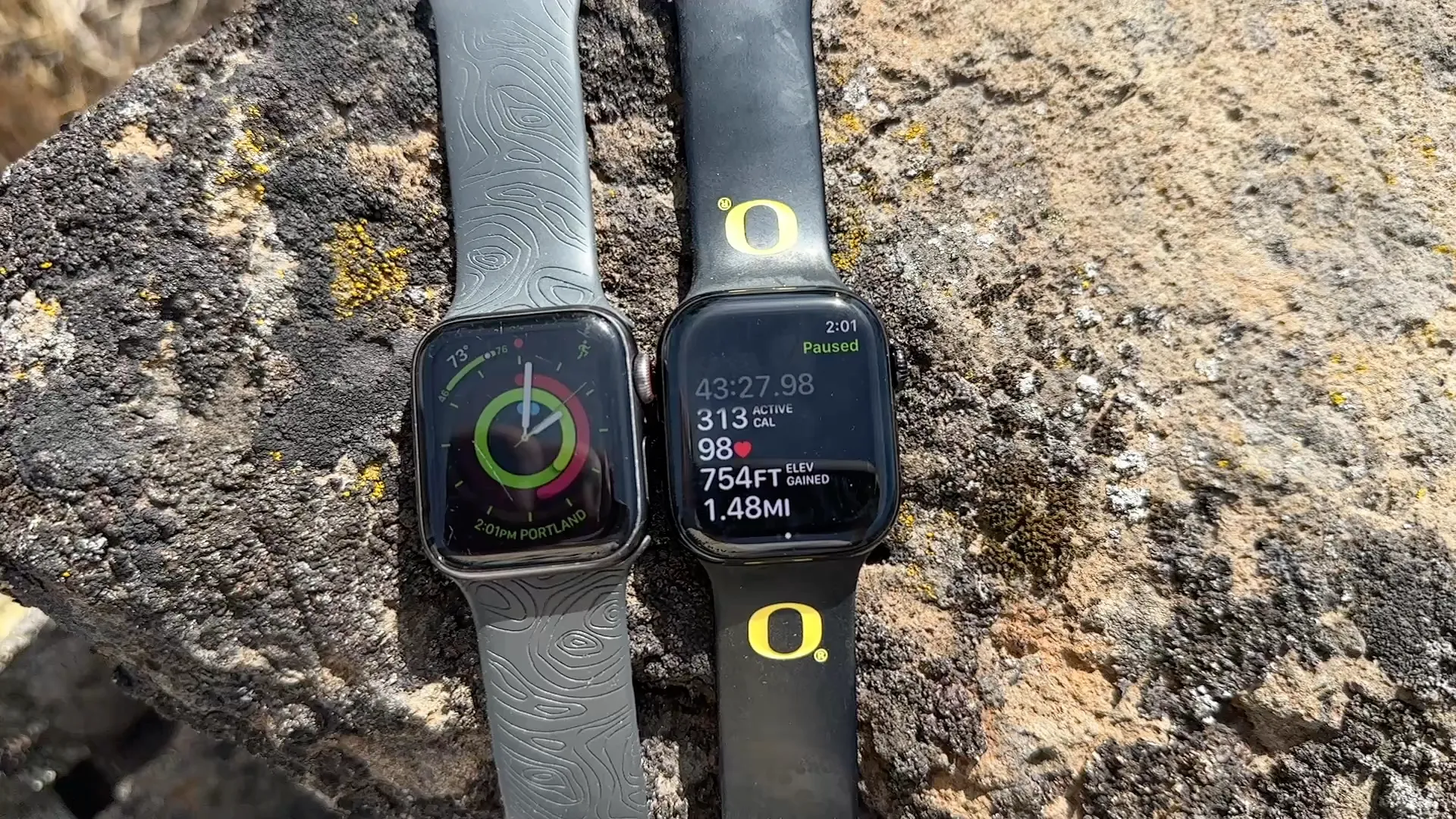Apple Watch 5 to 10 Impressions
Years ago, I purchased the first and only Apple Watch, the 5th edition featuring the always-on display. I picked up once covid shut down the world as a way to track my physical activity as I was no longer biking to work and no longer able to go to the gym. It largely worked; I set my workout goals at 820 calories a day and since then have averaged about 80% of the time hitting my workout goals.

I am not a watch power user; the only watch notifications I allow are text messaging/phone calls, exercise reminders, and navigation cues. Otherwise, my watch stays silent; in fact, it almost always is in silent mode. My Apple Watch 5 did what I wanted and what I needed well enough that I didn't bother even considering any of the later models. As the first "Always-on" display, there have certainly been improvements, but few things of interest beyond the blood oxygen monitor (more on that later)
What finally pushed me over the edge to upgrade was battery life. Apple, of course, tactfully prices its battery replacements in such a way that you might as well upgrade. Did I really want to spend $79 to replace the battery? I'd been living with a rapidly decreasing battery for nearly a year, and I made it work by buying an extra charger for my car to charge it before a hike or after, and I became used to mid-day charging. Finally, I decided it was time to either replace the battery or upgrade. I chose to upgrade.
The Upgrade
Over the five years since the release of the Apple 5, there's been a steady stream of upgrades: Apple has tacked on faster SoCs, moving from the 7nm node Dual-core Tempest to a newer 4nm node Dual Core Sawtooth, with more L1d and L2 cache, as well as added a more powerful neural engine. They also reduced the bezels, improved the screen brightness, improved the screen viewing angles, improved the optical heart rate sensor, improved the accelerator, included U1, better wifi, removed force touch, increased the faster charging capabilities, improved the screen hardness, made the speaker louder, changes the sizing fractionally (thinner and larger) and added a blood oxygen sensor that has been disabled due to legal disputes around the patent.
Year over year, the Apple Watch generational change is not terribly meaningful, but stacked over a five-year window, they add up. This is the new normal as the space for meaningful upgrades closes. That said, do any of these matter?
Yes. Overall, I've been rather impressed with how much better the screen is and how much smoother the animations are. In broad daylight, the screen is simply more visible. Also, the 42mm vs the old small 40mm is noticeable. As an active person, I don't like big watches, which is why I feel like the Apple Watch Ultra misses the mark. When hiking, exercising, biking, skateboarding, skiing, and the rare times I'm in a kayak, I want to be free of as many burdens as possible, and that includes my wrist. As an average-sized man, I could get the bigger watch, but I don't want the watch to be bigger. That said, I do appreciate the extra line of text it now can present. Apple tweaked the UI to display just a bit more information, which makes a world of difference.
I've yet to really notice much difference in the heart rate monitoring, but I'm also not obsessively checking it. I look at my activity points and check my heart rate during a run or hike, and that's about it, but there is comfort in that it's more accurate.
The speaker is noticeably better, to the point of seeming like it's a cheap laptop speaker from 20 years ago instead of a buzzing pest. Is it amazing? Absolutely not, but it is more viable to take a call on your wrist without smashing your ear to your watch if it's moderately noisy.
Is it worth the upgrade from the Apple Watch 5 to 10? Mostly. If none of the features sound terribly exciting, just replace the battery and hold out for another year. Perhaps Apple will improve the battery life which has been the achilles heel of the Watch or maybe another nice small quality-of-life upgrade.
There in lies the issue with the Apple Watch. If you've used one, there's not much to say; it does the Apple Watch things, like unlocking your computer, answering phone calls, sleep tracking, exercise monitoring, environmental noise monitoring, ECGs, functioning as a remote, finding your misplaced phone, and so on. These are all things my previous Apple watch did and did well. It's just that everything now has a bit more polish. I suppose that's the sign of a very mature product. I like it, but unless Apple has a breakthrough in health tracking, such as blood sugar monitoring and/or body temperature monitoring, there won't be a compelling reason to upgrade for years to come, and that's ok.